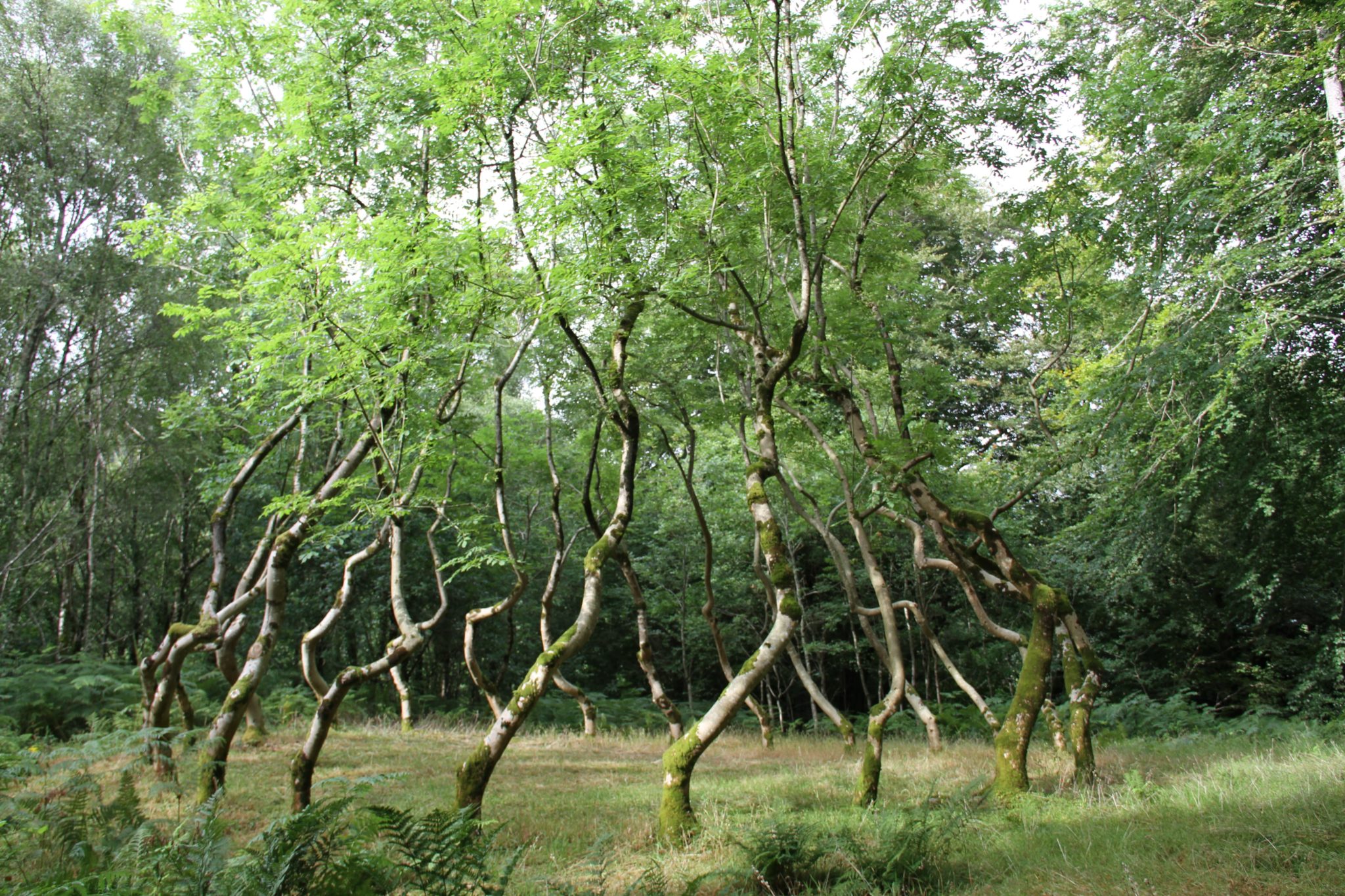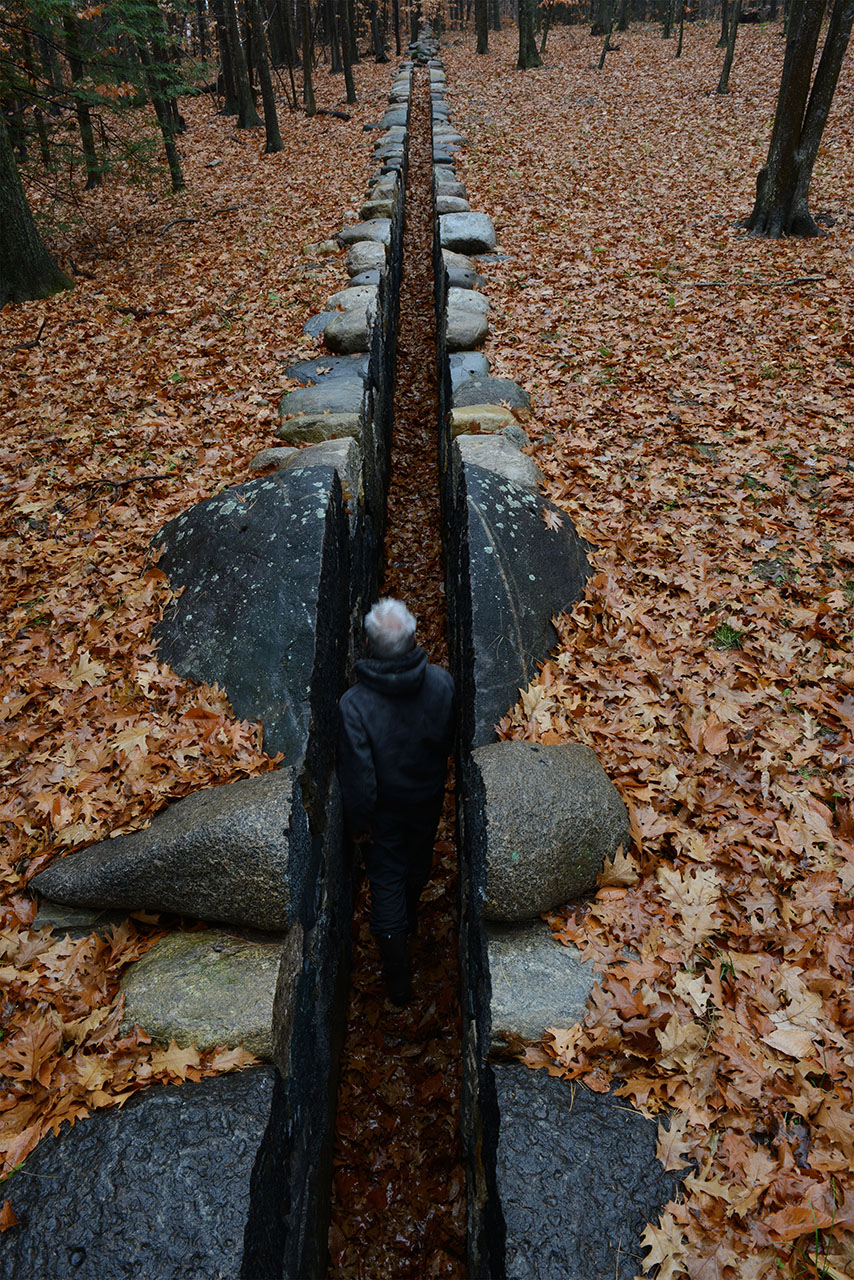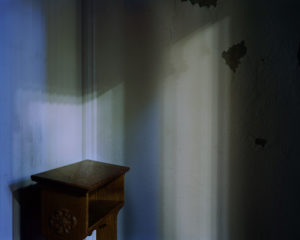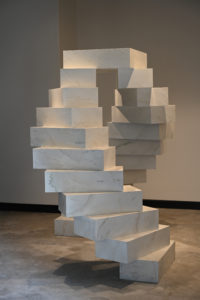THE IDEA THAT EMPTINESS, the simple absence of matter, can hold meaning has inspired creativity across cultures, in almost every conceivable medium. Composers have deployed silence, directors have cleared the stage, and poets have left as little as a word upon an empty page. In visual art, the empty territory around or within an object is known as negative space-for example, the open triangle formed by the arm and torso of a figure standing with hand on hip. When it comes to sculpture, this space opens up whenever a hole is made, a concave shape formed, or space left between separate objects.
Such openings might seem simple-or a mere byproduct of the “real” object, the proper source of interest. And yet attentive artists and viewers understand that negative spaces are integral to compositions, and at times even the key to understanding them. From a theological perspective, they can constitute gateways to the sublime, eliciting a sense of more-than. “An opening framed by closure,” as theologian Belden Lane suggests, is “the first requisite to a sense of the sacred.” Somehow the dynamic between object and space pulls on us, invites us in.
The concept of negative space offers an interesting point of connection between works of art and sacred texts. The Bible presents myriad examples of empty or bounded spaces, which it describes in palpable, visual terms, alive with meaning. Think of the space opened up by the parting of the Red Sea, for example, or of particular empty wombs and tombs which are among the most profound negative spaces in scripture.
We can read these spaces in various ways, which is precisely what makes them so compelling. They disclose possibilities beyond what we have known or experienced theologically, hermeneutically, and phenomenologically. In such spaces, the unknown and the known complement and complicate one another. As we will see (or rather, not see) the places where people encounter God, like the cleft in the rock where Moses hid, are often negative.
I want to bring to light these scriptural holes by inviting passages from the Bible-especially the creation and exodus narratives-into conversation with works of contemporary art. Because my own practice as a sculptor wades downstream from David Nash, Rachel Whiteread, and Andy Goldsworthy, I will draw from works by these three British sculptors.

David Nash. Ash Dome, planted 1977. Twenty-two ash trees. Wales. Copyright and courtesy of the artist.
First, a living sculpture, Ash Dome, begun in 1977 by David Nash (b. 1945). When he planted the circle of trees that comprise the work, he envisioned them eventually creating a “dome of space.” He was aware of previous generations of foresters in northern Wales who had planted trees in anticipation of the needs of future shipbuilders, and the idea of a ship or vessel appealed to him. Likewise, “around the time the idea of a ‘grown’ space was occurring to me,” he wrote recently, “I had been told that the ancient Chinese potters would hold the form of the space inside the pot in their minds and draw up the clay over that form. The practical point of the pot is its space inside.” Over many years, he grafted and pruned twenty-two ash trees until their mesh of branches encompassed a void. It is a space filled with possibility and expectation, inviting contemplation on the interdependence between root and branch, earth and sky, subject and object, past and future.
However modest, this little dome invites comparisons with the firmament in Genesis. Just as Ash Dome is made of negative and positive forms, the creation narrative offers a vision in which light and darkness, waters above and below the dome of heaven, are brought together in a dyadic unity. In Genesis, the sacred is fashioned not only by the contrast of empty and defined space, but also by time: God’s creative activities cease on the seventh day, when God rests, and in doing so creates the first Sabbath, itself a type of negative space. Nash’s dome of living, aging trees, with their seasons of growth and dormancy, likewise presents time itself as a medium, an object of contemplation.
Where Nash has shaped a hollow center, Rachel Whiteread (b. 1963) converts negative space into a material object. Whiteread’s sculptures, notes Fiona Bradley, form a “space of oscillation between presence and absence.” In theological parlance, her works are apophatic, asserting what isn’t in order to gesture toward what is. Her temporary House (1993) was cast from the whole interior of an archetypal East London Victorian terrace house which had been slated for demolition. Beyond its shape and origin, this work inverts the concept and purpose of a home: its impenetrable concrete block offers no point of entry, security, or shelter. The history of the work-which remained intact for just a couple months-adds a further layer of meaning. On the same day Whiteread was awarded Britain’s prestigious Turner Prize for the piece, the neighborhood council voted to have it removed. This eviction created a lacuna in the history of British sculpture, an empty space filled only by memory. In a lifecycle laden with interpretive implications, a house that was once occupied by generations of families was left empty, filled by concrete, demolished, and then reconstructed by documentary images.
Picking back up in Genesis, not far from where we left off with Nash, we find that Adam and Eve “hid themselves from the presence of the Lord God among the trees of the garden. But the Lord God called to the man and said to him, ‘Where are you?'” This story introduces a theme of absence and presence that will occupy much of the Hebrew Bible: God pursuing humanity. But when the man and woman are driven from their home in the garden-evicted, we might say-the equation is reversed, and humanity is left to search for God. God’s munificent presence, which suffused Paradise, no longer defines their world. A new variation on negative space has been introduced: exile. Much like Whiteread’s House, the original couple’s home-up to this point, their entire world-has been turned inside out. The way back may as well be backfilled with concrete. Life will instead, by necessity, need to move into the emptiness of the exilic world in which it suddenly finds itself. Interestingly, Whiteread has returned to themes of exile and wilderness in her recent Shy Sculpture series, which might be read as commentary on “positive spaces” denied to marginalized and displaced communities.
Wilderness comes into focus as a place of exile as well as creativity in the work of Andy Goldsworthy. Like Nash, Goldsworthy (b. 1956) uses materials drawn almost entirely from nature, from more traditional media of stone and wood to mud, twigs, rain, and even immaterial elements such as wind and moonlight. In Passage (2015), the artist creates a haunting narrow hallway, barely wide enough to walk through, cut along a split stone wall. The measurements and materials given for the piece are revealing: “Granite. Height 2.2m, width 0.5m, length 38.75m.” Tellingly, these dimensions measure not the stone but the space which the stone contains. As the title suggests, the piece is the passage. Goldsworthy’s careful arrangement of the stone halves in perfect, mirrored correspondence creates the sensation that the wall has been neatly sliced open. The boundary has become instead a walkway. In an act rife with scriptural allusions, Goldsworthy and his team of drystone wallers with sledges and wedges have cracked open a barrier to reveal another path. The Red Sea has been parted, as it were. Or, to take another episode from Exodus, the rock has been struck.
The escape from Egypt and the Israelites’ wanderings in the desert are not the only stories that echo in this work. Having known God only at a remove, through the burning bush and pillar of fire, Moses entreats God to reveal his presence. God assents, with a caveat: “you cannot see my face; for no one shall see me and live.” Placed by God safely in a cleft of the rock, Moses is allowed to see God from behind, “but my face shall not be seen.” It is through the enframing cleft that Moses glimpses God’s passing glory, little more than a shadow, a “brilliant darkness,” to use the language of Pseudo-Dionysius. Strikingly, it is through the visual device of empty space that Moses comes closest to a theophany, and yet even so this preeminent spiritual leader is only granted a vision in negative form: the back of the divine. Obfuscation, reversal, negation-these are the paradoxical modes of apprehension for a God who prefers being present through absence. It is no wonder that when the Israelites seek to create a resting space for their God, whether in the Tabernacle or eventually in the Temple, God mandates what must be left open, empty, undisturbed: God’s presence will alight “above the mercy seat, from between the two cherubim that are on the ark of the covenant.” In other words, God meets even his chosen people only in negative space. God measures out an empty passage in which to abide-one not unlike the mysterious channel hewn by Goldsworthy.
The artists examined here each glimpse something important in the negative spaces of their work. The tension between material and immateriality is for them, in different but related ways, dynamic, inspiring, and desirable. Their works indicate that there is something more to our surroundings than we currently see, whether that is an enclosure in the forest, the strange solidity of an empty room, or the spaces in a rock wall. They may not frame their work in religious terms, but the work they’ve made discloses ways of looking which are profoundly theological. These explorations of the immaterial via the material, presence via absence, are right at home in the language and images of the Hebrew Bible.
And even in the Gospels, which tell the story of God figured and enfleshed, negative space persists. From the vacant tomb to the punctures in the hands and feet of the embodied God, signals of emptiness remain. Like sculptures, the sacred stories tell of openings framed by closures, matter embracing the immaterial, and absence meeting presence in relational fullness.
Daniel Drage is pursuing a practice-led PhD at Duncan of Jordanstone College of Art and Design at the University of Dundee, in collaboration with the Institute for Theology, Imagination and the Arts at University of St Andrews. His art practice and research explore sacred space and time in relation to the human imprint on the material world.










